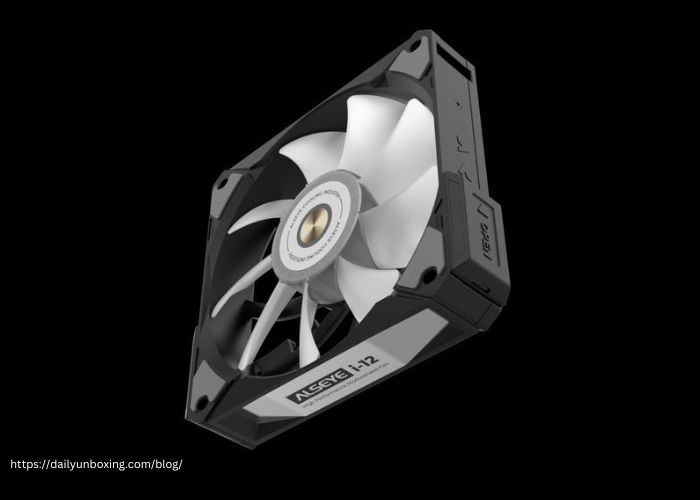The Ultimate Guide to the Computer Case You Need for Your Rig
Computing is among the most satisfying technology activities you can pursue and selecting a computer case is critical. Your computer case is more than the aesthetics because it is the exterior of your build, containing all of your components while dictating the flow of air around them and the accessibility of the interior during cleaning or upgrading your parts. This is what defines a case as ideal to house your computer and why selecting the perfect one changes the way you compute.
What is a Computer Case?
In the broadest sense, a computer case (or chassis if you’re talking to enthusiasts) contains all the internal components of a computer. You should consider it as the framework of your PC through which all the other components are connected and arranged, offers shielding and protection from dust and impacts, and is involved in the cooling process. Within the aircraft, there are cutouts for the motherboard, power supply, disk drives, and other components; they have been figured out to ensure that parts are safe and hardly-ever-getting-loose but at the same time easily reachable.
Explanation of the Different Compartments of a Computer Case
The typical computer case has various parts: mounting points for drives, slots for graphics cards, a power supply bay, and fan or radiator mounting options. Some come with windows or RGB lighting for added aesthetic appeal, and others have enhanced cable management spaces to keep things tidy. Every feature within a case serves a purpose, from airflow optimization to component accessibility, impacting everything from cooling efficiency to ease of upgrades.
computer case Click Here…
Types of Computer Cases
Not all cases are the same, and each type serves different needs based on the size and configuration of your build.
Full Tower Cases
Full towers are the largest cases available, perfect for high-performance builds with multiple graphics cards, plenty of storage, and complex cooling systems. Their spacious interiors make them ideal for users who want to add liquid cooling or extensive air cooling options. However, they’re bulkier and may require more desk space.
Mid-Tower Cases
The most popular choice, mid-towers, strikes a balance between size and functionality. They fit standard ATX motherboards and offer ample space for decent airflow and cable management while still being compact enough to fit on most desks. They’re versatile, accommodating both high-end builds and simpler configurations.
Mini Tower Cases
Mini towers are smaller and typically house Micro-ATX or Mini-ITX motherboards, making them suitable for basic builds or compact setups. If you are short on space then they will work perfectly for you but they don’t allow for future expansions or more efficient cooling processes.
Small Form Factor (SFF) Cases

For those who love to have small and sleek casing options, SFF cases offer the experience while offering enough computing power for most uses. They back Mini-ITX boards and are usually a headache but are very compact and visually appealing for efficiency enthusiasts.
Things to Consider When Selecting a Computer Case
Unfortunately, computer case isn’t all about the looks, when the time comes for you to purchase one, do consider the following. From airflow to space for components, here’s what to keep in mind.
Size Compatibility
The size of your case should align with your motherboard and other components. A mismatch can limit your options for storage, cooling, or graphics card upgrades, so it’s essential to know what fits before purchasing.
Airflow and Cooling
Efficient cooling is vital for optimal PC performance. Cases with good ventilation, fans, or even radiator mounts for liquid cooling provide better heat management, keeping components cooler and extending their lifespan.
Cable Management
Messy cables obstruct airflow, leading to higher temperatures and a cluttered appearance. Cases with built-in cable management features, such as routing channels and velcro straps, help keep everything neat and accessible for upgrades.
Aesthetic Appeal
Computer cases come in various styles, from sleek minimalist designs to bold RGB-lit models. Choosing a design that complements your setup can make your build feel more personal and enjoyable.
computer case Click Here…
Ease of Building and Upgrading
Cases with tool-free designs and accessible layouts make building and upgrading much simpler. Look for cases with removable panels, thumb screws, and modular drive cages for added convenience.
Understanding Case Materials

That means different materials not only affect the appearance of a case but also decide the stability of the case and cooling performance.
Steel vs. Aluminum
Steel cases are also more practical and can be had for less money, but the weight can be a decided drawback in some situations. Lighter, aluminum cases usually look better and feel better, but also run more expensive or sometimes have questionable durability and constructibility. The first material is strong with moderate thermal conductivity and is commonly used in the market Few materials have poor thermal conductivity yet are strong enough to be durable.
Plastic and Glass Components
Plastic is quite common on budget builds, while tempered glass side panels are for showing people your build. RGB lighting looks marvelous when applied to glass panels, but it increases the weight of the panel and it is easily scratched or broken.
The advantages and disadvantages of each material
Although steel is cheaper and durable compared to aluminum or glass it may not be as sleek and classy. Aluminum often has the best-looking designs but can weigh less than steel and could cost more. The elegant appearance of the case can be enhanced through glass panels but these would present certain problems with their sturdiness. Decide based on the stability, weight, and qualities that you feel are the most important to you.
The types of Add-In cards available in the market are dependent on both form factor and compatibility with the motherboard.
The form factor of the motherboard you’re using greatly influences the choice of the case you should go with.
Here we present the main types of motherboards that give you a starting point to know what to expect in the market:
ATX: The most common and fits the majority of mid and full-tower cases to the best degree.
Micro-ATX: Smaller than ATX, fits in mid-towers and mini-towers, offering a balance of size and functionality.
Mini-ITX: The smallest form factor, compatible with SFF cases, ideal for compact builds but often limited in features.
Choosing the Right Case for Your Motherboard
If you’ve already selected your motherboard, pick a case that supports it. Always confirm the dimensions and ensure enough space for other components, like GPUs and coolers, which can impact your final decision.
Cooling and Ventilation: Essential for Optimal Performance
The cooling of a case can be a make or mar factor on your gaming system or intense tasks.
Air Cooling and Liquid Cooling
Air cooling processes are cheaper and dependable, and they only involve using a fan to blow air over the heatsink. As for heat control, liquid cooling is shown to be very effective due to the use of a liquid as a heat transfer medium. For liquid cooling, you need cases with radiator mounts; for air cooling, make sure they are vented.
Case Fan Placement

Fan placement impacts airflow direction. Front intake fans pull in cool air, while rear and top exhaust fans release hot air. Cases designed with optimal fan placement offer better heat management and performance.
Mesh Panels and Dust Filters
Mesh panels increase airflow, letting more air in and out, but they can also let in dust. Dust filters keep the interior cleaner, requiring regular cleaning to maintain peak airflow and cooling.
Importance of Cable Management in a Computer Case
Good cable management isn’t just about looks; it also affects your system’s cooling and ease of maintenance.
Why Cable Management Matters
Poorly organized cables disrupt airflow, causing the system to heat up faster. Effective cable management prevents airflow blockage, reduces dust buildup, and makes future upgrades simpler.
Tips for Efficient Cable Management
Choose cases with dedicated cable management channels, plenty of tie-down points, and extra space behind the motherboard tray. Pre-routed cables and labeled connectors can also simplify the process.



